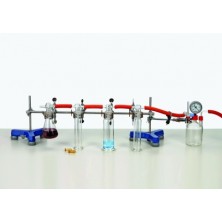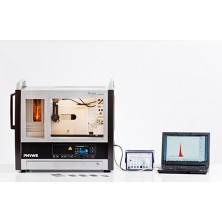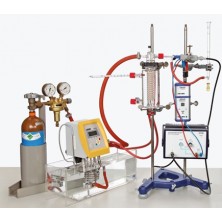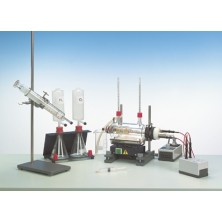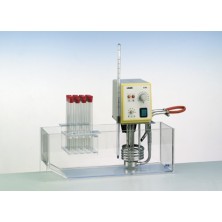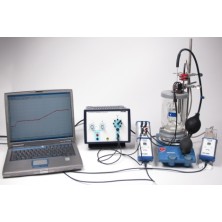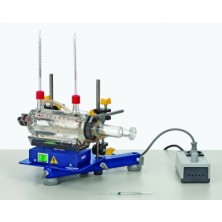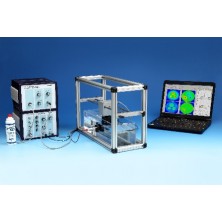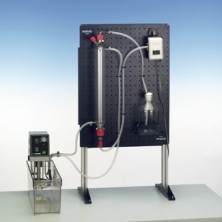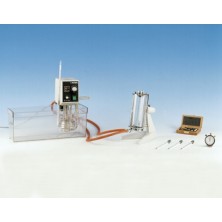
Viscosity measurement with the falling ball viscometer
Item no.: P2140400 Principle Due to internal friction among their particles, liquids and gases have different viscosities. The viscosity, a function of the substance’s structure and its temperature, can be experimentally determined, for example, by measuring the rate of fall of a ball in a tube filled with the liquid to be investigated. Tasks Measure

